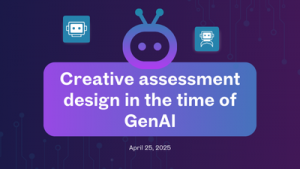Yuting Shen
In today’s world, globalization has brought intense knowledge exchange, encouraging us to constantly learn and understand each other. But there’s a catch: Western-centric views still dominate, creating an uneven playing field in the global knowledge system. Academic powerhouses in Western societies set the rules and control academic resources. Non-Western scholars often find themselves conforming to Western norms (Altbach, 1987; Marginson & Xu, 2023). They rely heavily on the Western knowledge system, including research paradigms, theories, concepts, and values, to get published and become recognized internationally (Li & Yang, 2020).
Non-Western scholars, especially in the humanities and social sciences (HSS), face a special challenge. Unlike science and technology, HSS is deeply rooted in local cultures and societies. This makes it tough for non-Western HSS academics to balance their traditional knowledge with the global (Western) academic standards (Yang, 2014). Chinese HSS scholars are also grappling with this challenge, providing a case for deeper investigation into effectively addressing such issues.
My Research Focus: Integrating Chinese and Western Knowledge
Against this backdrop, my research focuses on integrating traditional Chinese and modern Western knowledge in higher education. It aims to highlight Chinese HSS scholars’ tangible strategies in response to global knowledge asymmetries, and to infuse Chinese wisdom into the global conversation. By doing so, my research can facilitate intellectual pluralism in the global knowledge system. It not only offers diverse approaches to academic exploration, but also delivers insights that potentially enhance personal well-being.
One of my current projects takes a deep dive into the fascinating ways contemporary Chinese HSS academics integrate traditional and modern knowledge in their research practices. Through interviews and thematic analysis, it uncovers their rationales, goals, principles, and strategies related to this matter. The rationale for this integration is clear: to address the global knowledge disparities and to provide Chinese individuals with a deeper exposure to their own traditional knowledge. Below is an overview of how these scholars take concrete actions.
Key Principles for Integration
- Modern Perspective: View traditional Chinese knowledge through a contemporary lens.
- Authentic Understanding: Truly grasp the essence of ancient wisdom.
- Specific Analysis: Recognize and apply traditional Chinese knowledge accurately to specific subjects.
These principles echo the work of Edward Shils (1971), and the idea of tradition as the past living in the present. Rather than glorifying traditional knowledge at the expense of modern insights, I am looking for a balanced, inclusive approach.
Strategies for Integrating Knowledge
- Comparative Analysis: An effective way to blend ancient wisdom with contemporary research involves a direct comparison; or an implicit comparison, including those related to concepts. In fact, my research seemingly centers on Chinese HSS scholars, but it is inherently comparative, because Western frameworks have been embedded within the Chinese knowledge and serve as a constant reference point.
- Transforming Knowledge: This involves two key aspects:
Developing Chinese Theories: By engaging with Western theories, we can create new theories that reflect Chinese characteristics, drawing from the vast intellectual resources of ancient China.
Global Application: Theories based on traditional Chinese wisdom, such as the unity of reason and emotion, can have both local and global significance. These concepts can gain global validity through widespread application.
A Call to Action
The research agenda of contemporary Chinese HSS scholars is not just about theory—it is about making a real impact. It is a call to action for a more inclusive and equitable approach to HSS research, both in China and globally. By bridging East and West, we can create a harmonious fusion of knowledge that benefits everyone and fosters a sustainable future for our shared society.
References
Altbach, P. G. (1987). The knowledge context: Comparative perspectives on the distribution of knowledge. State University of New York Press.
Li, M., & Yang, R. (2020). Enduring hardships in global knowledge asymmetries: A national scenario of China’s English-language academic journals in the humanities and social sciences. Higher Education, 80(2), 237–254. https://doi.org/10.1007/s10734-019-00476-3
Marginson, S., & Xu, X. (2023). Hegemony and inequality in global science: Problems of the center-periphery model. Comparative Education Review, 67(1), https://doi.org/10.1086/722760
Shils, E. (1971). Tradition. Comparative Studies in Society and History, 13(2), 122–159.
Yang, R. (2014). China’s strategy for the internationalization of higher education: An overview. Frontiers of Education in China, 9(2), 151–162. https://doi.org/10.1007/BF03397011



